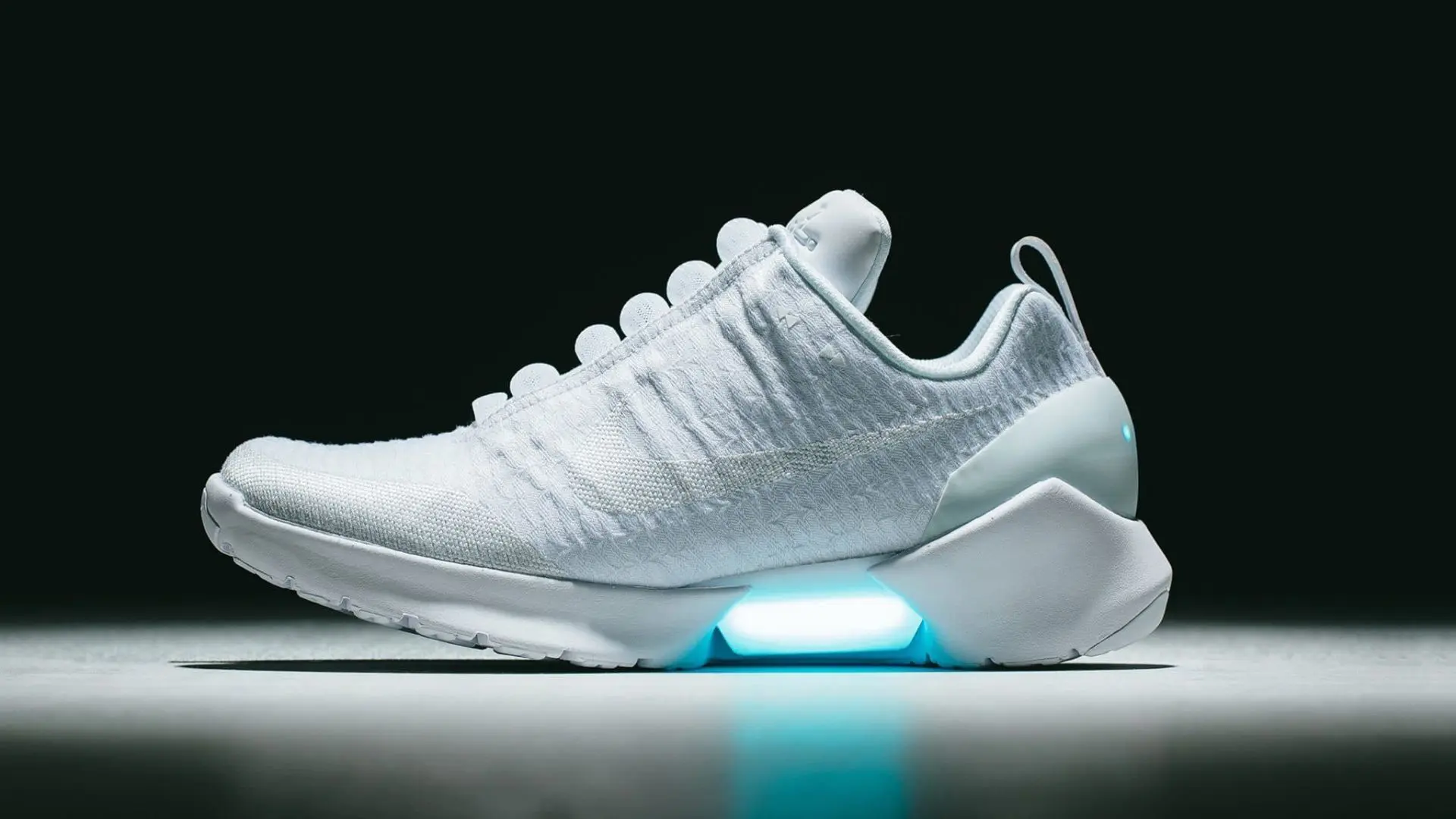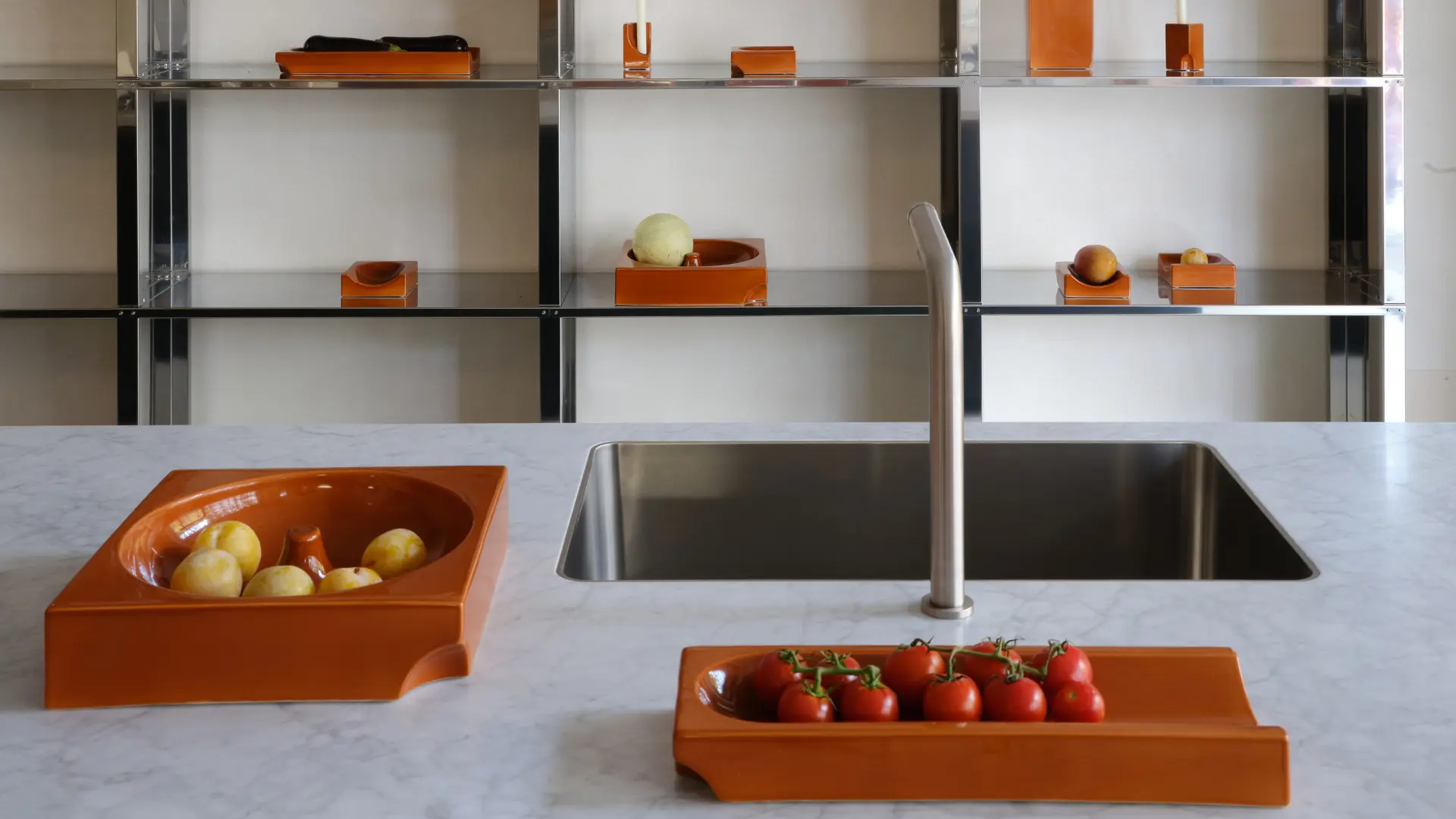Expanding horizons: the evolution of user experience spaces
With the advent of extended reality (XR) technologies, particularly the recent introduction of Apple’s Vision Pro, our perception of “space” has expanded, leading to an evolution of its meaning across various contexts and definitions.
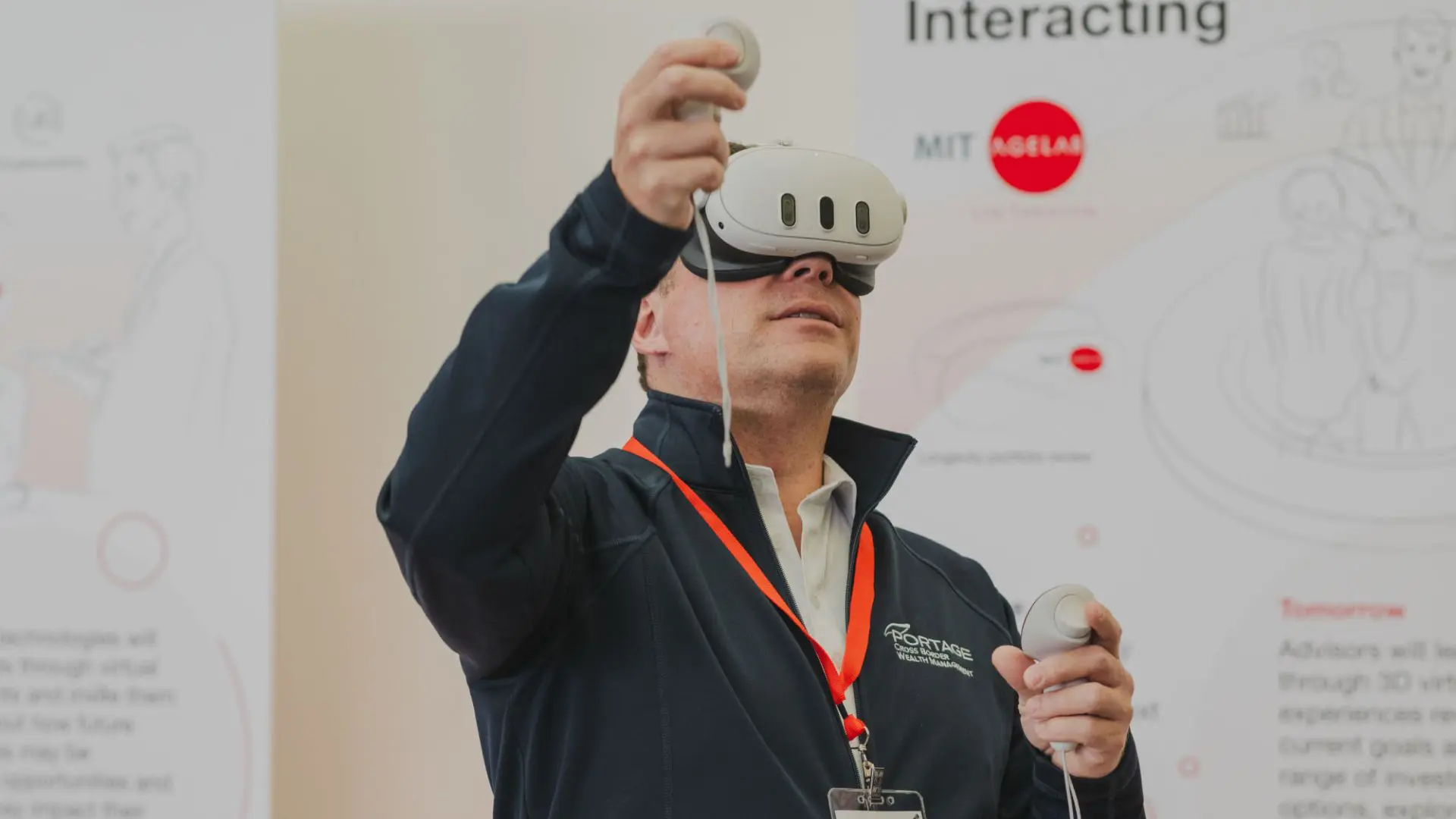
In March of this year, the Massachusetts Institute of Technology (MIT) AgeLab hosted the Preparing for Longevity Advisory Network (PLAN) conference over two days in Cambridge, MA. It was a privilege to contribute to the design and planning of this event alongside Dr. Joseph F. Coughlin, Founder and Director of MIT AgeLab and my lab colleagues (Figure 1).
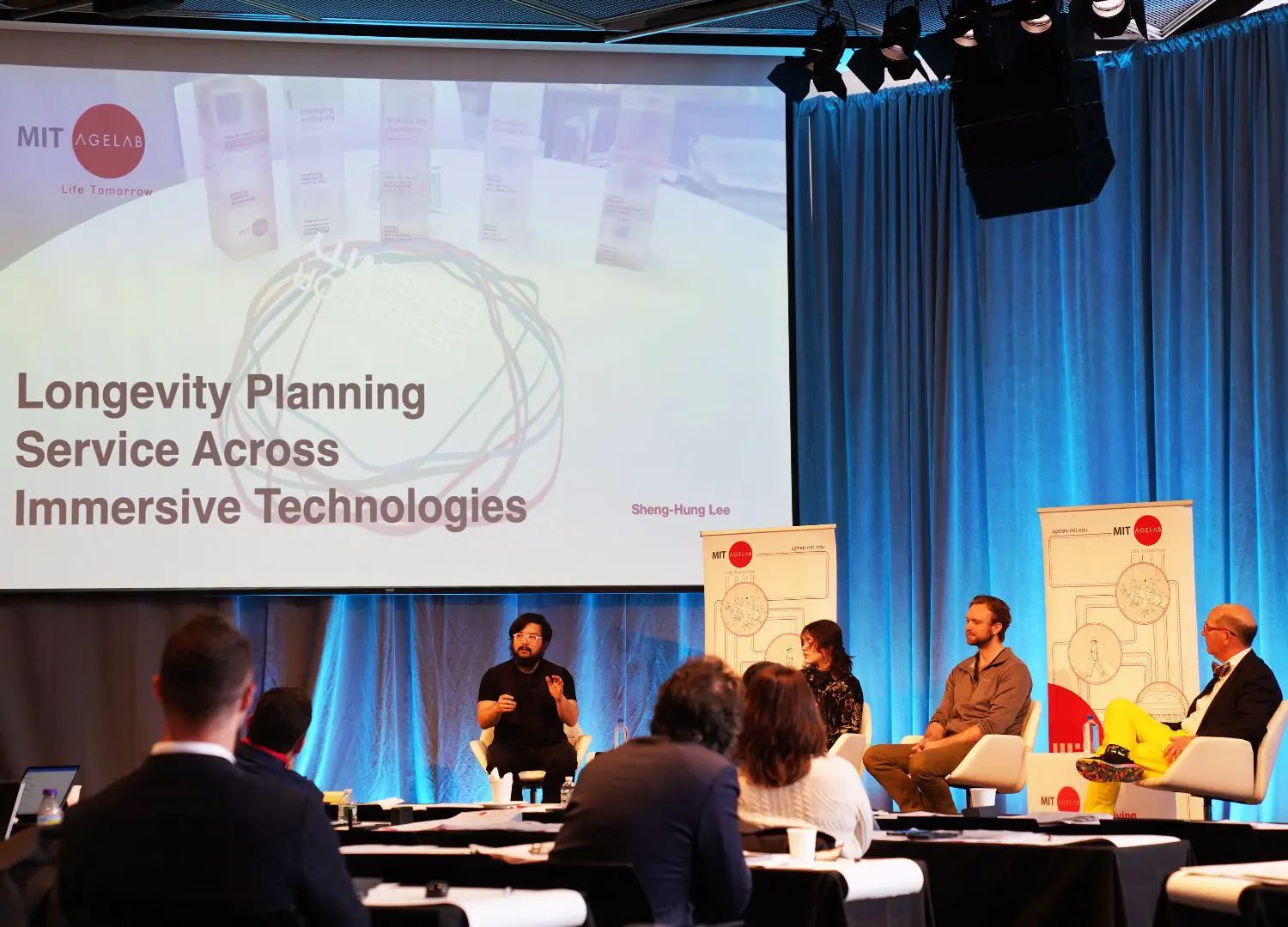
The annual PLAN conference focused on financial planning, service design, and the Design for Longevity (D4L) concept. It was tailored primarily for financial advisors, professionals in wealth management and healthcare sectors, as well as those in user experience roles.
In this article, I share my reflections and insights from the event’s design and development process, emphasizing spatial and experiential design. I also contemplate how these concepts can be universally adapted to enhance other events or activities through a more human-centered approach. My analysis is divided into three parts: spaces for engagement, co-creation, and experimentation.
User experience spaces – Key Takeaway:

Space for engagement
At the conference, a standout feature was the XR zone, crafted to showcase the future of financial planning and services via immersive technology. We equipped the zone with two Oculus Quest 3 devices, complemented by a knowledgeable guide and five illustrative poster boards to deliver a comprehensive, informative experience (Figure 3).

The area became a hub for financial advisors who actively engaged with the setup, offering valuable feedback about how technologies disrupt the experience of a user, the expectation of the market, and the transformation of industries. The space’s accessibility and inviting ambiance were a result of thoughtful environmental design and space curation.
For instance, a striking red carpet was laid out to evoke the glamour of an Oscar Awards walk. The large, poster boards were strategically placed and adorned with vivid visuals and thought-provoking questions designed to connect with life’s realities, spanning the past, present, and future.
Another thoughtful detail was the placement of a large TV screen adjacent to the boards, showcasing carefully selected footage from an individual’s viewpoint engaging with XR technology to empower participants to project their future selves in relation to working and personal space. This also allowed those waiting for their turn with the devices to immerse themselves in the concepts and narratives being presented.
The “space for engagement” was about harnessing the curiosity of the attendees by providing an accessible and low-cost opportunity for experience. With two Oculus Quest 3 devices available, guests were invited to delve into this technology under expert guidance.
These nuanced details and the service touchpoints seamlessly combined to signify that this was a space dedicated to engagement, heightening the participants’ interest and excitement.
Space for co-creation
On the second day of the conference, we strategically placed long sheets of white paper and sharpies on the tables in front of the attendees. Our intention was for participants to jot down their notes, learnings, ideas, reflections, or expectations and share them with their peers throughout the conference. This initiative was met with enthusiasm and resulted in a tapestry of rich content (Figure 4).
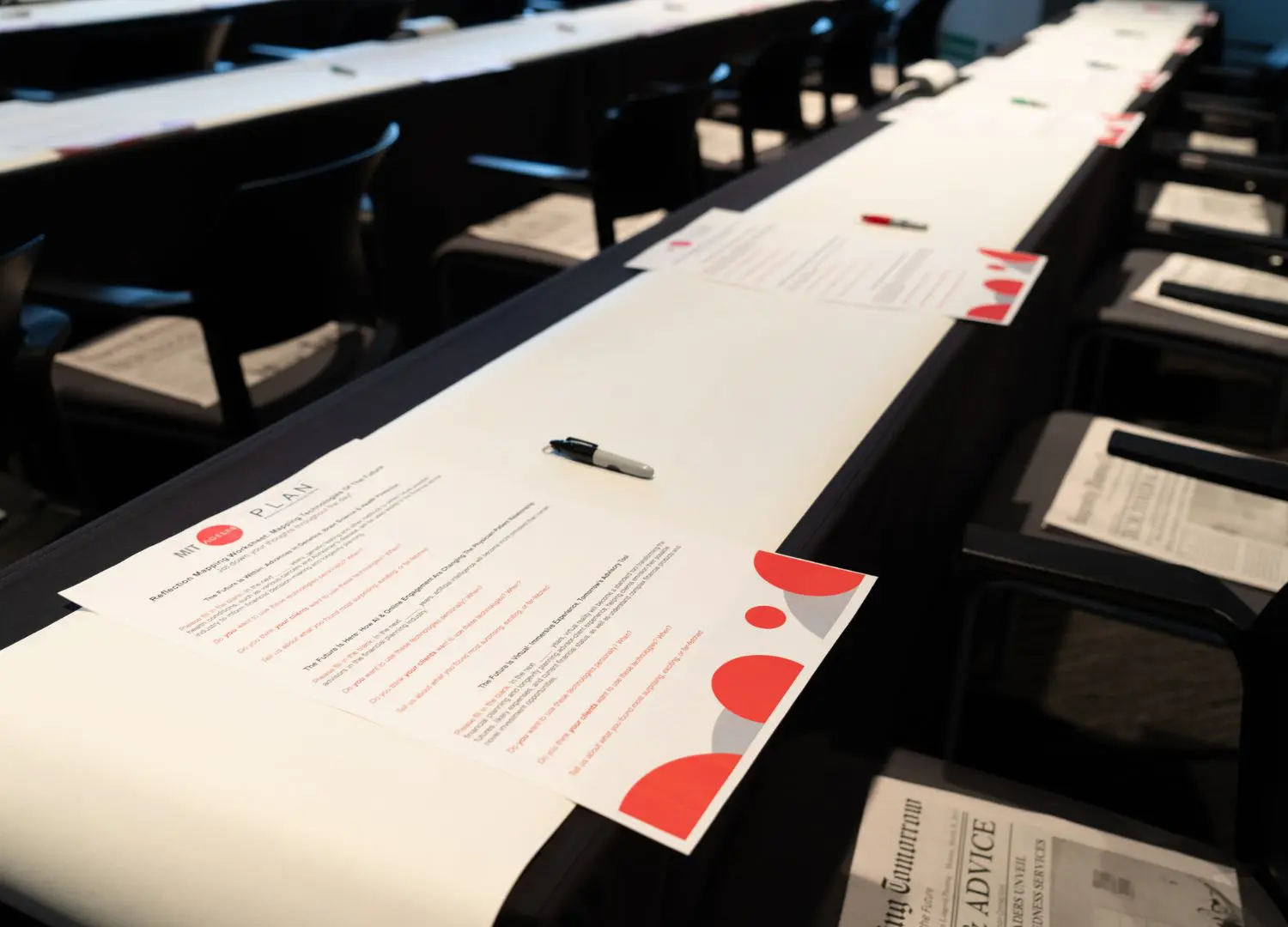
Toward the end of the conference, I captured many photos of the diverse expressions of participants’ creative thoughts, words and doodles that had materialized on paper (Figure 5).
This simple sheet of paper served as a collective canvas for creativity, transcending its basic function. It represented a “space for co-creation,” where participants were encouraged to express themselves openly.
Whether through physical, digital, or hybrid means, this co-creative space was about more than guiding collaboration; it was about facilitating an environment where creative methods, decision-making, and presentation became a collective, engaging, and dynamic experience. This approach not only added delight but also ensured the inclusivity and diversity of the outcomes.
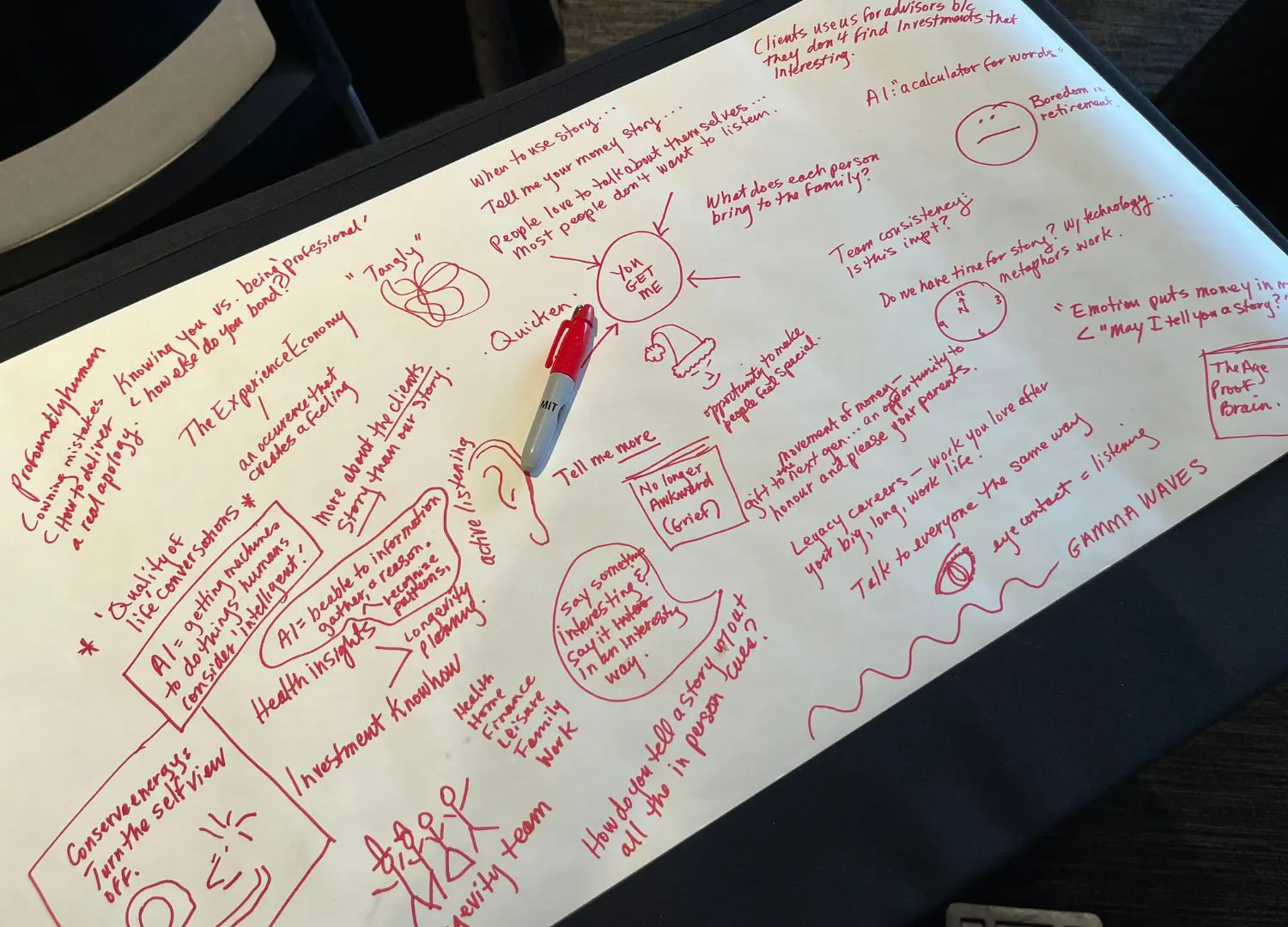
Space for experiment
We integrated our Design for Longevity (D4L) studio experiment space at MIT AgeLab into the conference to better communicate the concept of “longevity coaching”—a service that intersects financial planning, service design, and user experience (Figure 6).
The “space for experiment” draws inspiration from the “living lab” concept. Living labs function as open innovation ecosystems, operating within real-life settings where continuous iterative feedback is applied across the innovation lifecycle to generate sustainable impact.
The setup of a D4L studio aims to authentically simulate, offer reflections on, and envision what the nascent field of longevity coaching might look and feel like, and the narratives that unfold behind the scenes.
To facilitate this, we crafted four expansive foam core boards that outlined our D4L design process from inspiration, ideation, and implementation. These four boards created an inviting area that encouraged attendees to engage in dialogue with us about this initiative.
The “space for experiment” is designed to be an immersive environment where participants are encouraged to explore the exhibition at their own pace, guided by personal interest and intent. At the conference, the D4L studio served as both the content and the concept, offering an experiential journey through our experimental space.
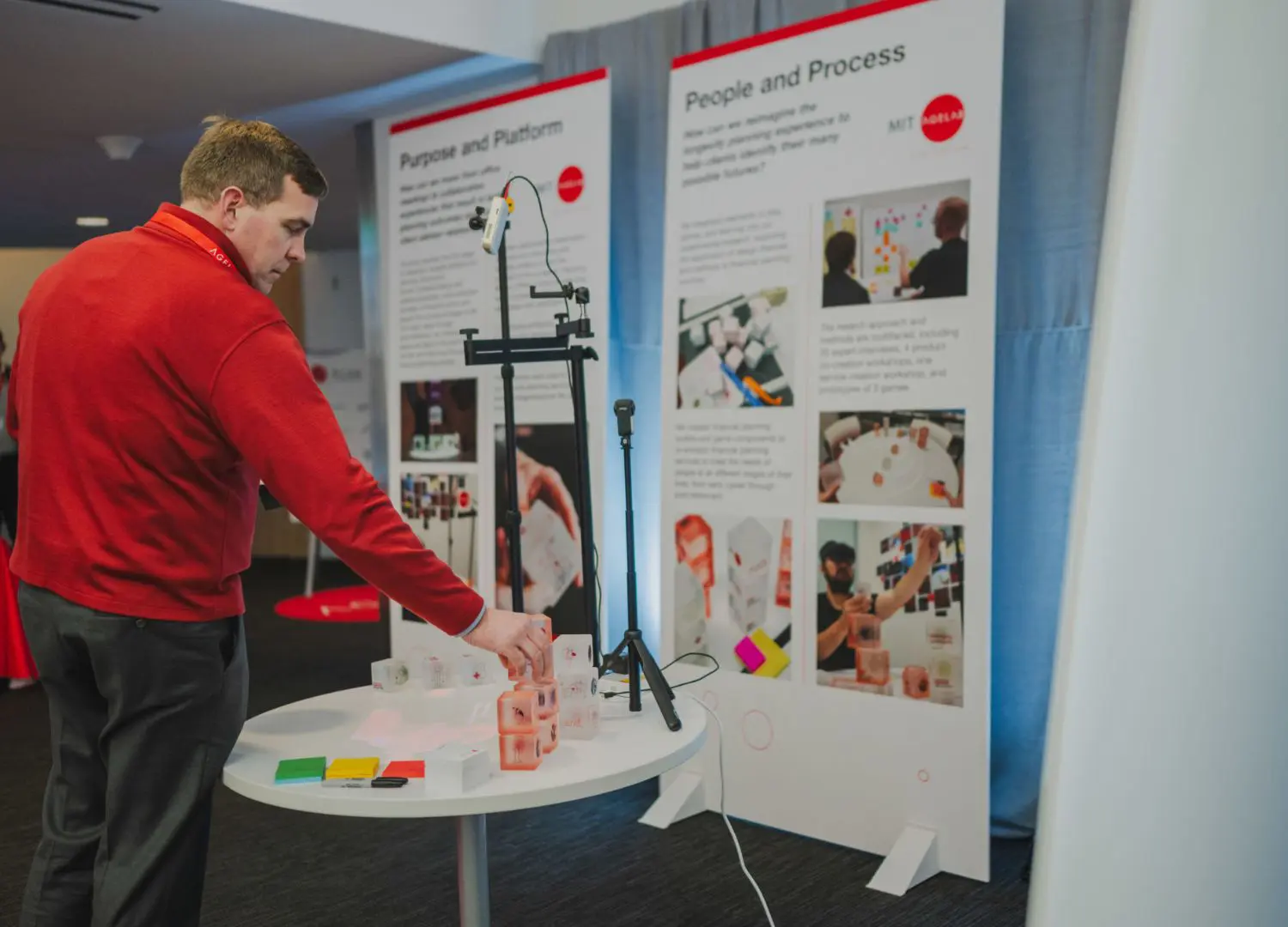
Summary: space for broader social context
In this article, we discussed three types of different spaces with examples from the PLAN conference hosted by MIT AgeLab.
- Spaces for engagement should spark individual curiosity, empowering attendees to interact with new products, services, and experiences. This is achieved through a design that is both inviting and accessible, encouraging participants to immerse themselves and discover innovations firsthand.
- Spaces for co-creation are envisioned as participatory canvases, inviting individuals to contribute their unique perspectives through guided collaboration. These spaces facilitate a shared creative process, allowing attendees to leave their mark on the collective experience.
- Spaces for experimentation are immersive environments crafted to allow attendees to navigate the exhibit at their own pace, following their personal interests and objectives. This autonomous exploration is central to fostering a sense of discovery and individual connection with the content.
Beyond illustrating the concepts of spaces for engagement, co-creation, and experimentation, it is important to consider space design within a wider social context. Establishing a successful human-centered design space requires an equally human-centered design and its interactive design process (Figure 7).
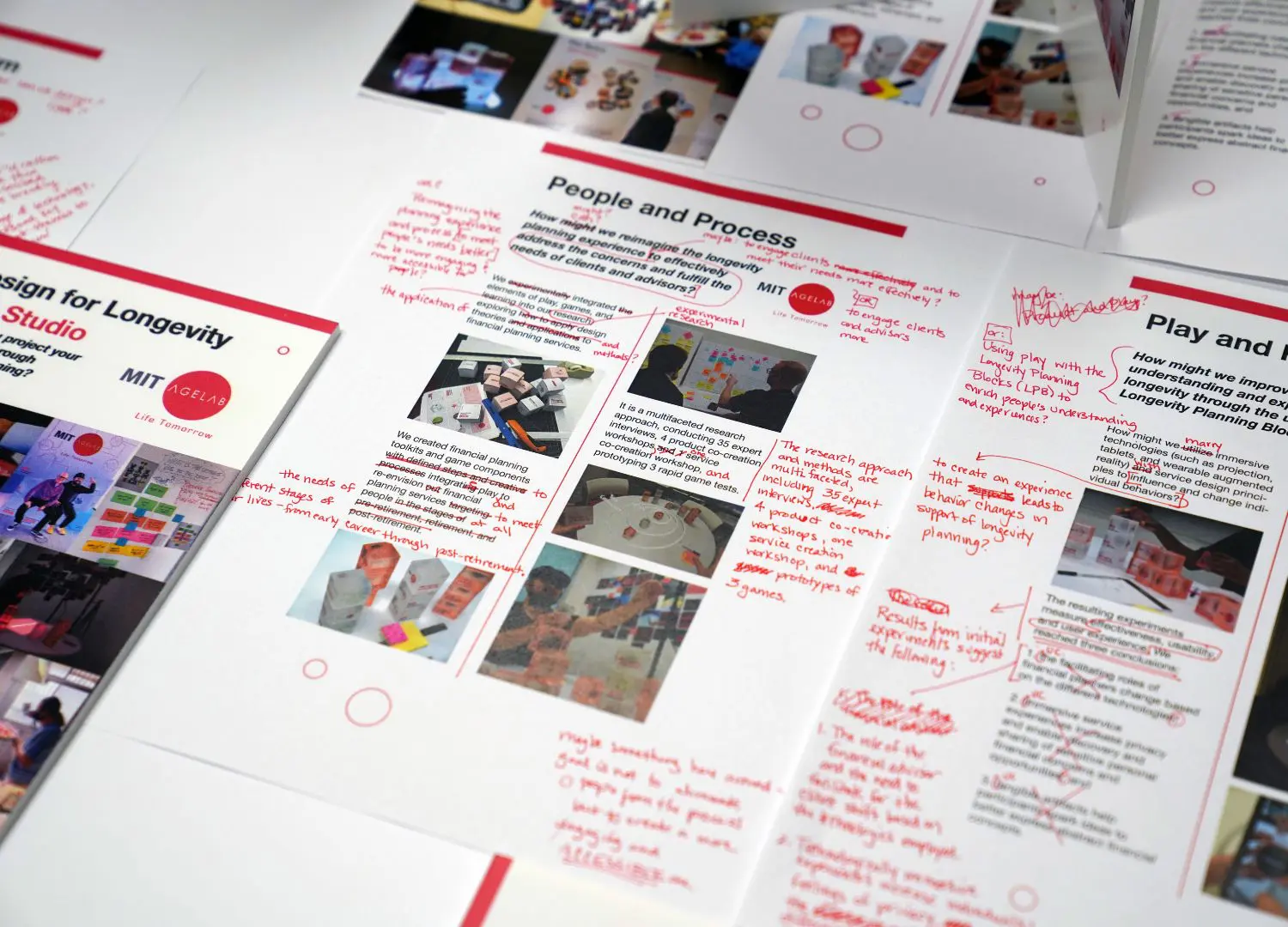
Designers and researchers must exercise empathy, designing the spatial experience from the participants’ perspective with meticulous attention to detail of each touch point along the user journey and comprehensive considerations from inspiration, ideation, to implementation.
This also involves considering participant demographics like age and occupation, their expertise such as financial planning or service design, and even addressing specific requirements that go beyond space design, such as accessibility for disabled individuals, transportation, lighting, meals, promotion, and the follow-up engagement.
Practical questions also arise: What font size, type, and colors on a poster are most readable and comfortable for most people? What is the ideal height for display boards to ensure ease of reading and photographing for documentation? What formats for takeaways—flyers, QR codes, text messages, or photos—will best serve participants post-conference? How do we curate the space experiences, in sequence from the beginning, through the middle, and to the end of the journey, that matter and cater to participants’ learning objectives?
The concept of “space” extends beyond the physical or digital realms and exhibition areas. It also encompasses the expansion of an individual’s mental capacity, thinking process, information model, cognitive load, and communities (Figure 8).
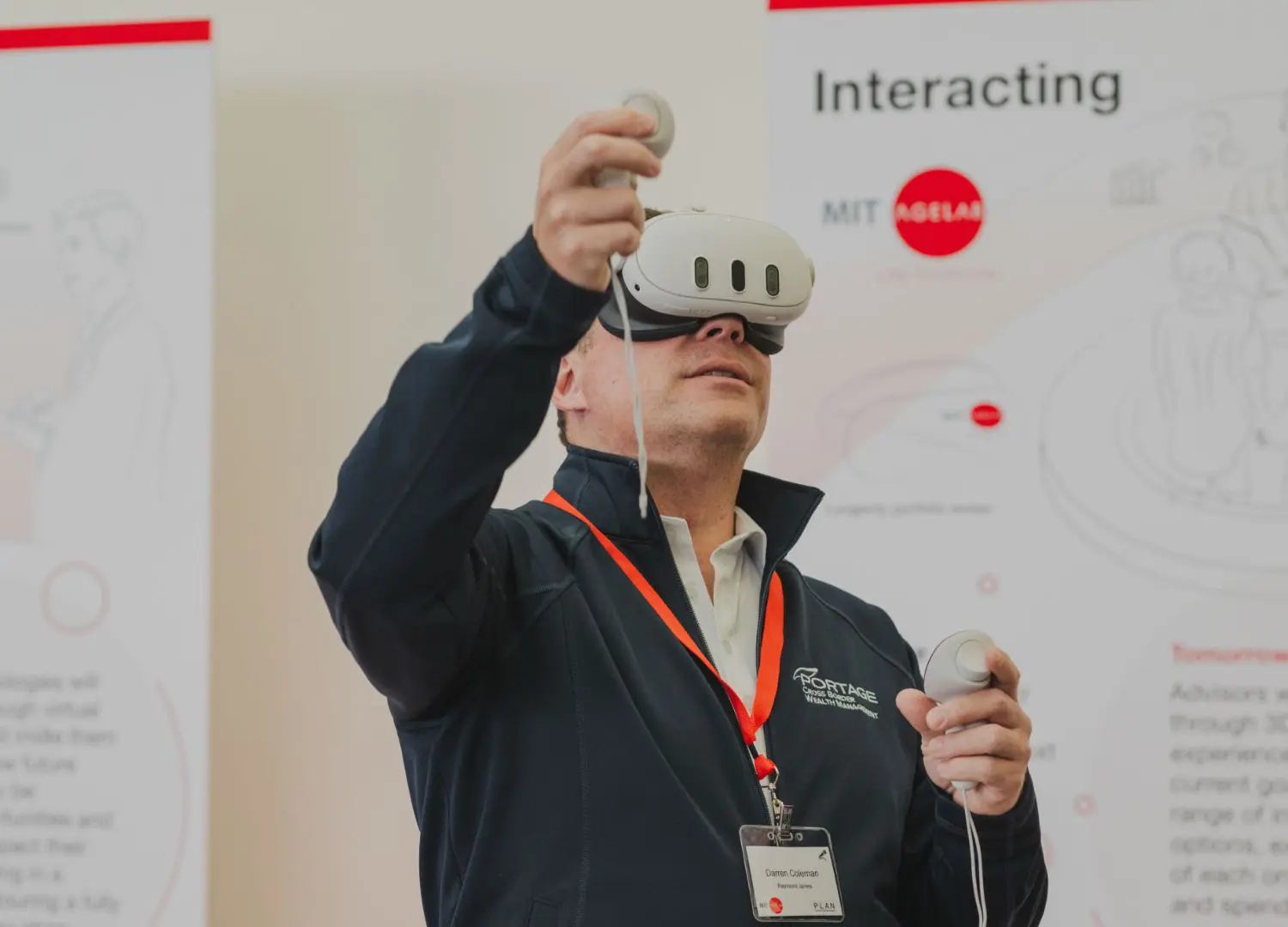
With advancing technologies and societal complexity, the definition, design, and utilization of space must be reconsidered in light of social, economic, ethical, political, and cultural concerns. We aim for space design that fulfills practical and aesthetic needs while also addressing broader societal considerations.
References:










